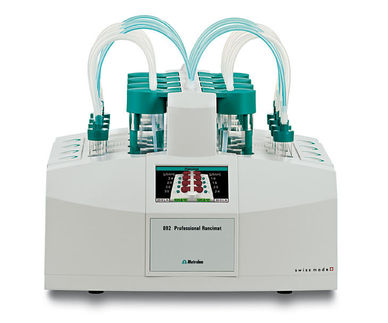The B vitamins are eight water-soluble vitamins that play important roles in cell metabolism. Historically, the B vitamins were once thought to be a single vitamin, referred to as Vitamin B (much like how people refer to Vitamin C or Vitamin D). Later research showed that they are chemically distinct vitamins that often coexist in the same foods. Supplements containing all eight B vitamins are generally referred to as a vitamin B complex. Individual B vitamin supplements are referred to by the specific name of each vitamin (e.g. B1, B2, B3).
List of B vitamins
B vitamin deficiency
Several named vitamin deficiency diseases may result from the lack of sufficient B-vitamins. Deficiencies of other B vitamins result in symptoms that are not part of a named deficiency disease.
| Vitamin | Name | Deficiency effects
|
| Vitamin B1 | Thiamine | Deficiency causes Beriberi. Symptoms of this disease of the nervous system include weight loss, emotional disturbances, Wernicke's encephalopathy (impaired sensory perception), weakness and pain in the limbs, periods of irregular heartbeat, and edema (swelling of bodily tissues). Heart failure and death may occur in advanced cases. Chronic thiamine deficiency can also cause Korsakoff's syndrome, an irreversible psychosis characterized by amnesia and confabulation.
|
| Vitamin B2 | Riboflavin | Deficiency causes Ariboflavinosis. Symptoms may include cheilosis (cracks in the lips), high sensitivity to sunlight, angular cheilitis, glossitis (inflammation of the tongue), seborrheic dermatitis or pseudo-syphilis (particularly affecting the scrotum or labia majora and the mouth), pharyngitis, hyperemia, and edema of the pharyngeal and oral mucosa.
|
| Vitamin B3 | Niacin | Deficiency, along with a deficiency of tryptophan causes Pellagra. Symptoms include aggression, dermatitis, insomnia, weakness, mental confusion, and diarrhea. In advanced cases, pellagra may lead to dementia and death.
|
| Vitamin B5 | Pantothenic acid | Deficiency can result in acne and Paresthesia, although it is uncommon.
|
| Vitamin B6 | Pyridoxine | Deficiency may lead to anemia, depression, dermatitis, high blood pressure (hypertension), water retention, and elevated levels of homocysteine.
|
| Vitamin B7 | Biotin | Deficiency does not typically cause symptoms in adults but may lead to impaired growth and neurological disorders in infants.
|
| Vitamin B9 | Folic acid | Deficiency results in a macrocytic anemia, and elevated levels of homocysteine. Deficiency in pregnant women can lead to birth defects. Supplementation is often recommended during pregnancy. Researchers have shown that folic acid might also slow the insidious effects of age on the brain.
|
| Vitamin B12 | Cyanocobalamin | Deficiency causes macrocytic anemia, elevated homocysteine, peripheral neuropathy, memory loss and other cognitive deficits. It is most likely to occur among elderly people as absorption through the gut declines with age; the autoimmune disease pernicious anemia is another common cause. In rare extreme cases, paralysis can result.
|
Related nutrients
Many of the following substances have been referred to as vitamins because they were believed to be vitamins at one time, and they are relevant to vitamin nomenclature in that the numbers that were assigned to them form "gaps" in the series of B-vitamin names. Some of them, though not essential to humans, are essential in the diets of other organisms; others have no known nutritional value. While they are non-"essential" in that they may be synthesized by the body from other starting materials, they have dietary significance. See also Orthomolecular medicine.
- Vitamin B4: Adenine, a nucleobase.[1]
- Vitamin B7: "Vitamin I" of Centanni E. (1935) — also called 'Enteral factor' — is a water and alcohol soluble rice-bran factor which prevents digestive disturbance in pigeons. It governs the anatomical and functional integrity of the intestinal tract. Later found in yeast. Possible candidates for this substance are inositol, niacin (nicotinic acid), and biotin. Carnitine was also claimed to be a candidate but is not soluble in alcohol.[citation needed]
- Vitamin B8: adenosine monophosphate, or alternately inositol has also been called vitamin B8
- Vitamin B10: para-aminobenzoic acid, or PABA
- Vitamin B11: Pteryl-hepta-glutamic acid – Chick growth factor, which is a form of Folic acid. Later found to be one of five folates necessary for humans; (L-carnitine) is called Vitamin B11 in France[citation needed].
- Vitamin B13: Orotic acid.
- Vitamin B14: cell proliferant, anti-anemia, rat growth, and antitumor pterin phosphate named by Earl R. Norris (biochemist of folic acid fame). Isolated from human urine at 0.33ppm (later in blood), but later abandoned by him as further evidence did not confirm this. He also claimed this was not Xanthopterin.
- Vitamin B15 6-O-(dimethylaminoacetyl)-D-gluconic acid (Pangamic acid)
- Vitamin B16 (dimethylglycine) – also known as DMG. (However Lipoic acid was discovered and named a B-Vitamin after B15 and before B17)
- Vitamin B17 (Amygdalin, Nitrilosides, or laetrile) – A substance found in a number of seeds, sprouts, beans, tubers and grains. While toxic in large quantities, proponents claim that it is effective in cancer treatment and prevention. [2]
- Vitamin B18 –
- Vitamin B19 –
- Vitamin B20 (Carnitine) –
- Vitamin B21 –
- Vitamin B22 – often claimed as an ingredient of Aloe vera extracts but also in many other foods. Claimed by one source to be Vitamin B12b-δ.
- Vitamin Bh – another name for Biotin
- Vitamin Bm ("mouse factor") – also used to designate Inositol
- Vitamin Bp (Choline) –[dubious – discuss]
- Vitamin Bt (L-carnitine) –
- Vitamin Bv – a type of B6 but not Pyridoxine
- Vitamin Bw – a type of Biotin but not d-Biotin
- Vitamin Bx – another name for PABA (para-Aminobenzoic acid)
- Lipoic acid –
Note: B16, B17, B18, B19, B20, B21 & B22 do not appear to be animal factors but are claimed by naturopaths as human therapedic factors.
Health benefits
The B vitamins often work together to deliver a number of health benefits to the body. B vitamins have been shown to:
- Support and increase the rate of metabolism
- Maintain healthy skin and muscle tone
- Enhance immune and nervous system function
- Promote cell growth and division — including that of the red blood cells that help prevent anemia.
Together, they also help combat the symptoms and causes of stress, depression, and cardiovascular disease.
All B vitamins are water soluble, and are dispersed throughout the body. Most of the B vitamins must be replenished daily, since any excess is excreted in the urine.[3] A six year cobalamin store can be found in the liver, despite its water soluble nature.
Vitamin B sources
Vitamin B comes from a number of natural sources, including potatoes, bananas, lentils, chilli peppers, tempeh, liver oil, liver, turkey, and tuna. Nutritional yeast (or brewer's yeast) and molasses are especially good sources of Vitamin B. Marmite and the iconic Australian spread Vegemite bills itself as "one of the world's richest known sources of vitamin B". As might be expected, due to its high content of brewer's yeast, beer is a good source of B vitamins[4]--in fact, beer is sometimes referred to as "liquid bread"[5]--although this may be less true for filtered beers[6]and the alcohol in beer impairs the body's ability to activate vitamins.
Another popular means of increasing one's Vitamin B intake is through the use of dietary supplements purchased at supermarkets, health centers, or natural food stores.
B vitamins are also commonly added to energy drinks.
Mnemonic
One mnemonic to remember the most commonly referenced B vitamins is "The (B1, Thiamine) Rhythm (B2, Riboflavin) Nearly (B3, Niacin) Proved (B6, Pyridoxin) Contagious (B12, Cobalamin)".[7]
References
- ^ Vera Reader (1930). "The assay of vitamin B4". Biochem J. 24 (6): 1827–31.
- ^ Clark, Jim. "Foods Containing B17", Sept 2003. Retrieved on 2007-07-07.
- ^ Vitamins, water soluble at FAQ.org[1]
- ^ Glaser, Gregg. "Beer and Your Health", July 2002. Retrieved on 2007-01-05.
- ^ World Grains Summit - 2006 Meeting Abstract
- ^ Harden, A and Zylva, S S (1924-07-21). "Investigation of Barley, Malt and Beer for Vitamins B and C" (PDF). Lister Institute. Retrieved on 2007-01-05.
- ^ Mnemonic at medicalmnemonics.com 399
| Vitamins (A11) |
|---|
| fat soluble | A (Retinol, Beta-carotene, Tretinoin, Alpha-carotene) - D (Ergocalciferol, Cholecalciferol, Dihydrotachysterol, Calcitriol, Calcidiol) - E (Tocopherol, Tocotrienol) - K (Naphthoquinone, Phylloquinone/K1, Menatetrenone/K2) |
|---|
| water soluble: B vitamins | B1 (Thiamine, Sulbutiamine, Benfotiamine) - B2 (Riboflavin) - B3 (Niacin, Nicotinamide) - B5 (Pantothenic acid, Dexpanthenol, Pantethine) - B6 (Pyridoxine, Pyridoxal phosphate) - B7 (Biotin) - B9 (Folic acid) - B12 (Cyanocobalamin, Hydroxocobalamin, Methylcobalamin, Cobamamide) |
|---|
| water soluble: other | C (Ascorbic acid) - Choline |
|---|
|







